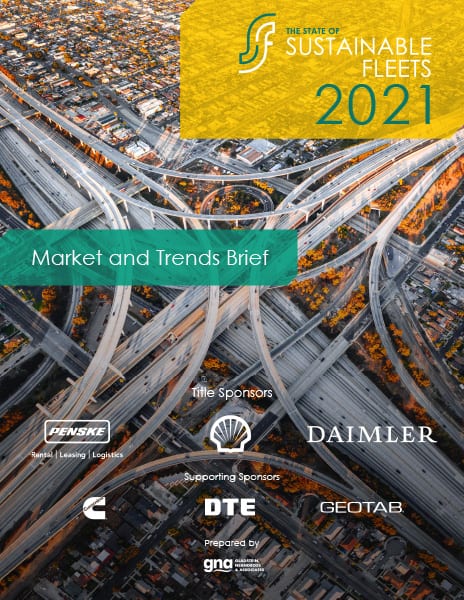Fuel Cell Electric Vehicles
Major Investments by OEMs and Infrastructure Providers to Create Future Breakthroughs

Fleet Types Leading Adoption
-
Short Haul (HD)
-
Transit
-
Municipal/Shuttle
-
Urban Delivery
Benefits
Demonstrations and early-commercial FCEV products may offer fleets another zero emission pathway and the range and fueling times fleets expect from gasoline and diesel vehicles.
-
Torque/Acceleration
-
Fueling times can be comparable
-
Cleaner Working Environment
-
Quiet Operation
-
Zero Emissions
-
No Odor
Challenges
As the most nascent technology, significant cost, vehicle availability, and infrastructure challenges remain to be resolved before the technology is mature.
-
No Public Infrastructure (Outside of California)
-
Limited Fuel Supply
-
Fuel Cost Premium
-
Service and Support Limitations
-
Sustained Power Output Difficulties
State of Sustainable Fleets 2021: Market and Trends Brief
The 2021 State of Sustainable Fleets Market and Trends Brief is a technology-neutral analysis of key insights and critical trends for today’s leading on-road clean vehicle technologies. While the previous year’s State of Sustainable Fleets report serves as a foundation, the 2021 update builds upon this introductory resource and provides concise insight into the significant trends and developments that occurred over the course of 2020 — a landmark year for the clean fleet industry.

It provides good power and it doesn't smell like diesel. There’s much lower vibration in the cab compared to diesel trucks. — TTSI